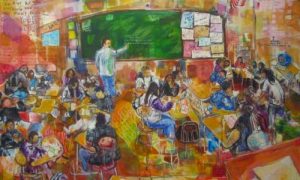
Students Perceptions and Learning – Action research has grown in popularity throughout the past two decades (Harkavy,Puckett, & Romer, 2000; Fleming, 2000). It is becoming a more accepted tool for teachers to assess their own teaching strategies and reflect upon their effectiveness. McNiff (1999) defined action research as the name given to an increasingly popular movement in educational research that encourages teachers to be reflective of their own practices in order to enhance the quality of education for themselves and their students.
McNiff continued that action research is a form of self-reflective inquiry that can be used in school-based curriculum development, professional development, and school-improvement schemes. Schmuck (1997) extended on teacher self-reflection and stated that “when educators strive to reflect on their past, present, and future actions and engage in solitary dialogue, their perspectives of work mature” (p. 8). McNiff concluded that action research actively involves teachers as participants in their own educational improvement.
Mettetal (2001) provided a seven-step outline to develop a classroom action research project. These steps included statement of the problem, review of literature, research strategy, data gathering, data analysis, taking action, and sharing the findings. The following sections discuss in detail how this author addressed these steps in a case study in which student perception of an online classroom environment and a traditional classroom environment were assessed along with the corresponding learning outcomes.

As indicated by Mettetal (2001), the statement of the problem for a classroom action research project should include a question related to student learning. Incorporating aspects of online and traditional classroom teaching could benefit both students and teachers if the learning outcomes are comparable. Little research exists on the evaluation of student perception of on-line versus traditional classroom learning environments and their corresponding learning outcomes, in particular, when the course material was to be delivered simultaneously by the same instructor.
After reading “Students Perceptions and Learning you can check important issues for ESL teachers on the section PDFs, and visit my YouTube channel.
